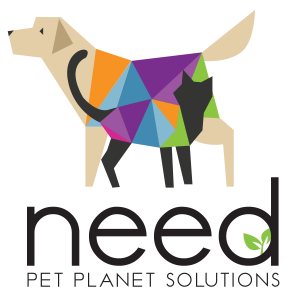Dr. Al Townshend
The association between the environment and cancer was first recognized in the 18th century when physicians began to notice an increase of certain cancers in chimney sweeps due to constant exposure to coal and the tar that accumulates in the chimney.
Since then, it has become apparent that there are many environmental risk factors for both humans and their pets. The good news is that over 35% of human cancers (and probably pet cancers) are due to environmental factors that can be avoided or modified.
The Environment
The environment we share with or pets includes the land we live on, the air we breathe, and the water we use. We are bound to all three and cannot survive without them. Many of the lifestyle choices we make for ourselves and our pets will determine how we interact with the environment. How and where we choose to live our lives plays a significant role in how we connect with the environment.
Different geographic regions can have diverse differences in the rate of cancer. There is little specific information about cancer location and pets; however, the human data suggests the rate of some cancers is higher in some areas of Canada than in others. Similarly, the rates of human cancers are higher in rural areas compared to more urban areas.
When it comes to the environment and preventing cancer, it is all about avoiding the things in nature that can expose us and our pets to an increased risk.
Air Pollution
Cigarette smoke is an excellent example of how our lifestyle choices interact with environmental exposure. Family members that utilize tobacco products such as cigars, cigarettes, and chewing tobacco put their pets at increased risk of a large number of specific cancers.
Industrial smoke, smog, asbestos, automobile exhaust, particulate dust, and chemicals released into the air have all been incriminated in increasing the risk of many forms of cancer in pets, including skin, lung, and digestive cancers.
Certain canine breeds and white-colored cats have an increased risk of specific skin and oral cancers from the Ultraviolet radiation in sunlight,
Water Pollution
Many of the same air pollutants also contaminate the water and further increase the risk of cancer.
Toxic chemicals sprayed on the land eventually end up in the water our pets drink. Fertilizers applied to crops containing toxic nitrites can leach into the ground and eventually end up in the water.
Natural ground levels of heavy metals, such as lead and arsenic, are a concern in public water facilities as even lower levels in drinking water, over time, can increase the risk of cancers in both humans and their pets.
Ground Pollution
It is essential to understand that what is in the ground or applied to the ground can eventually end up in the air and water. Older, unlined landfills are examples of indiscriminate dumping of toxic waste with little regard to the environment and potential human and animal exposure.
The use of landscaping and agriculture products such as pesticides, herbicides, and insecticides that contain carcinogens can put pets at risk. Humans usually wear shoes and socks, which reduce our exposure. Pets exposed can lick these toxins, and they can accumulate in their tissues, putting them at risk.
Air pollutants eventually settle on the ground and increase the risk of exposure.
Persistent organic pollutants are toxic chemicals that don’t break down easily in the environment. If not controlled, they can escape into the environment. In the ground, they can eventually get into the food supply we feed ourselves and our pets. Many are stored in the body’s fat and can accumulate to influence the potential for cancer. The “dirty dozen,” include aldrin, chlordane, DDT, dieldrin, dioxins, endrin, furans, heptachlor, hexachlorobenzene, mirex, PCBs, and toxaphene.
We all want to provide our beloved feline and canine companions with a safe and healthy environment free from potential contaminants that can increase the risk of disease, including cancer. Being aware of the risk factors and making every effort to eliminate them from the environment is the key.
____
Additional Resources



